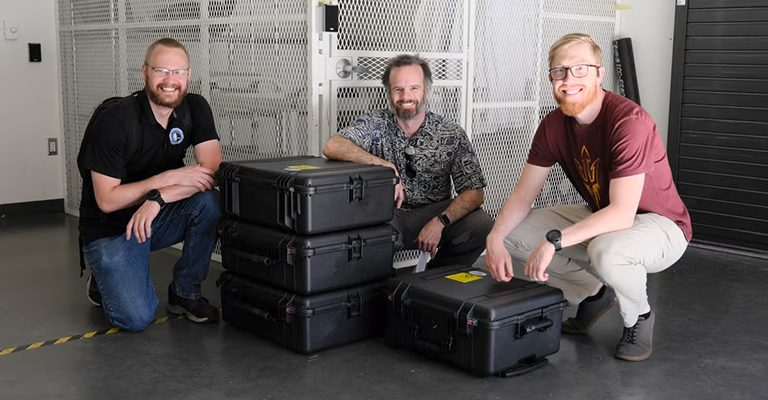About
What is the potential for life on planets orbiting the galaxy’s most common stars?
The Star-Planet Activity Research CubeSat (SPARCS) is a NASA-funded space telescope designed to study the ultraviolet (UV) radiation from low-mass stars and its impact on potential extraterrestrial life. Key features of SPARCS include:
- Size: Comparable to a family-size cereal box (6U CubeSat format).
- Target: M and K dwarf stars, the most common in the Milky Way.
- Mission: First to provide long-term, continuous UV monitoring of low-mass stars.
- Significance: Data crucial for understanding exoplanet habitability.
SPARCS will observe 10-20 low-mass stars over days to weeks, measuring UV radiation in two bands: 153-171 nm and 260-300 nm. This information will help scientists:
- Understand how UV radiation affects planetary atmospheres.
- Interpret biosignatures detected by other missions, like the James Webb Space Telescope.
- Guide future searches for extraterrestrial life.
By studying these stars’ UV behavior, SPARCS will provide valuable insights into the potential for life on their orbiting planets, enhancing our understanding of habitability in the galaxy.
Status
Active
Category
Technology development and demonstration | Research and science
Environment
Earth | LEO, MEO, GEO
Contact
Key accomplishments
- Successfully designed and implemented the Iridium Interface Module, facilitating communication between satellite systems and ground control.
- Completed the assembly of the Iridium Antenna, ensuring optimal signal reception and transmission for satellite communications.
- Developed a vacuum optical mounting system to support precise alignment and stability of optical components in a controlled environment.
- Conducted comprehensive environmental testing to validate the performance and reliability of components under various conditions.
Publications
- On the verge of an astronomy CubeSat revolution.
- Monitoring the high-energy radiation environment of exoplanets around low-mass stars with SPARCS (Star-Planet Activity Research CubeSat).
- Ultraviolet detectors for astrophysics missions: A case study with the Star-Planet Activity Research CubeSat (SPARCS).
News

SPARCS mission spacecraft bus delivered to ASU for final assembly
May 02, 2024 | Kim Baptista
The ASU mission cleared a major milestone as it received its chassis that will house the instruments.

The team is working wonderfully together pushing the entire system to completion.
Team
David R. Ardila
Constance Spittler
Sarah Peacock
Victoria Meadows
John Hennessy
Todd Jones
Sam
Zach
Tyler Field
Joe Dukowitz
Noah Campo
Explore more projects
Learn about our research programs dedicated to creating a future in space that prioritizes people and environments. Collaborate with experts and students to explore groundbreaking ideas and solutions that drive positive change.